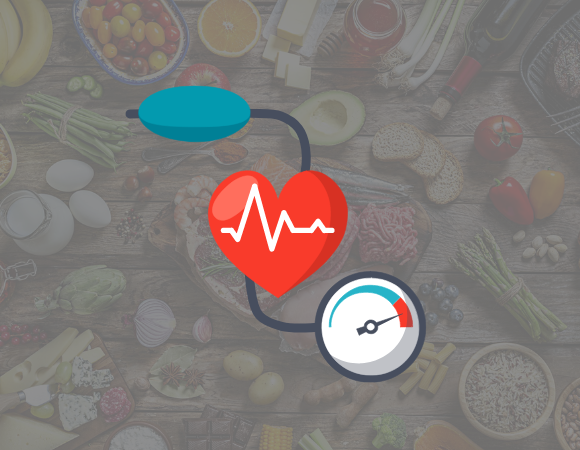What is Blood Pressure?
Blood Pressure is the measure of blood force against the walls of our arteries. As our heart pumps it around our whole body. It is typically measured in units of millimeters of mercury (mmHg) and recorded as two numbers: systolic pressure (the higher number) and diastolic pressure (the lower number). For example, a blood pressure reading of 120/80 mmHg (said as "120 over 80") would indicate a systolic pressure of 120 mmHg and a diastolic pressure of 80 mmHg.
 |
| Low Blood Pressure Can be treated with food |
What is Low Blood Pressure?
Hypotension is another name for Low Blood Pressure. In this condition, the blood pressure in the arteries is lower than the Normal value. Generally, we consider low blood pressure if the reading of 90/60 mmHg.
Symptoms Of Low Blood Pressure
The symptoms of low blood pressure can vary depending on the individual and the severity of the condition. The most common symptoms of low blood pressure may include:
- Dizziness or lightheadedness
- Fainting or near-fainting
- Nausea
- Fatigue
- Blurred vision
- Lack of concentration
- Cold, clammy, or pale skin
- Rapid, shallow breathing
- Weakness
- Rapid or irregular heartbeat
It's worth noting that some people with low blood pressure may not experience any symptoms at all. If you experience any of these symptoms and suspect that you may have low blood pressure, it is important to consult with a healthcare professional to determine the cause and any necessary treatment.
Low Blood Pressure Treatment Food
There are several dietary changes and food choices that can help to increase low blood pressure:
Increase your salt intake: Consuming more salt can help to raise blood pressure, but it should be done under medical supervision and not overdo it as high salt intake can have negative effects on health.
Drink more fluids: Dehydration can cause blood pressure to drop, so it's important to stay hydrated by drinking plenty of water and other fluids.
Eat a healthy diet: Eating a diet rich in fruits, vegetables, whole grains, and lean protein can help to maintain healthy blood pressure levels.
Add more protein to your diet: Eating foods high in protein, such as meat, fish, eggs, and dairy products, can help to increase blood pressure.
Consume more vitamin B-12 and folate: These vitamins can help to increase blood pressure levels. Foods that are high in vitamin B-12 include meat, fish, and dairy products, while folate can be found in leafy green vegetables, fruits, and fortified cereals.
Consume moderate caffeine: Caffeine can temporarily increase blood pressure, so drinking moderate amounts of caffeinated beverages such as coffee, tea, or soda can help to raise low blood pressure.
It's important to note that these dietary changes should be done under the supervision of a healthcare professional, as some people may have underlying medical conditions that make certain food choices unadvisable.
 |
| Fruits & Vegetables play a vital role in good health |
Fruits That Can Be Used For Low Blood Pressure
There are several fruits that are high in vitamins and minerals and can help to maintain healthy blood pressure levels. These include:
Berries: Berries such as strawberries, blueberries, and raspberries are high in antioxidants and can help to improve cardiovascular health.
Citrus fruits: Oranges, lemons, limes, and grapefruits are high in vitamin C and can help to improve blood vessel function.
Kiwi: Kiwi is high in potassium, which can help to balance the effects of sodium and lower blood pressure.
Melons: Melons such as watermelon and cantaloupe are high in potassium and can help to lower blood pressure.
Pomegranate: Pomegranates are high in antioxidants and can help to improve blood flow and lower blood pressure.
Avocados: Avocados are high in potassium, and healthy fats and can help to lower blood pressure.
It's important to note that a healthy diet should be balanced and not based on only one type of food, and to consult with a healthcare professional before making any significant dietary changes.
Must Care
If you have low blood pressure, there are several things you can do to take care of yourself and manage your condition:
Monitor your blood pressure: Keep track of your blood pressure readings at regular intervals, and let your doctor know if you notice any changes.
Get enough fluids: Make sure to drink plenty of water and other fluids to stay hydrated.
Eat a healthy diet: Eating a diet rich in fruits, vegetables, whole grains, and lean protein can help to maintain healthy blood pressure levels.
Add more salt to your food: Consuming more salt can help to raise blood pressure, but it should be done under the guidance of a healthcare professional.
Avoid sudden changes in position: Sudden changes in position can cause blood pressure to drop, so be sure to move slowly and gradually when getting up from a sitting or lying position.
Avoid alcohol and smoking: Alcohol and smoking can both lower blood pressure, so it's best to avoid them.
Take your medications as prescribed by your doctor: If you are taking medications for low blood pressure, make sure to take them as prescribed by your doctor.
Avoid long standing or sitting: Try to take breaks and move around when standing or sitting for long periods of time.
It's important to work closely with your healthcare provider to develop a care plan that is tailored to your specific needs. They can also help you monitor your condition, and make any necessary adjustments to your treatment plan.
Can We Take a Bath in Low Blood Pressure Condition?

Bathing effects on low blood pressure
It is generally safe to take a bath if you have low blood pressure, but it's important to take a few precautions to avoid any sudden changes in blood pressure:
Avoid hot water: Hot water can cause blood vessels to dilate, leading to a sudden drop in blood pressure. Instead, use warm water.
Avoid prolonged exposure: Long baths or showers can cause your body to lose fluids and can cause a drop in blood pressure. Keep your bath or shower short and avoid prolonged exposure.
Avoid sudden temperature changes: Sudden changes in temperature, such as going from a hot bath to a cold shower, can cause blood pressure to drop.
Get up slowly: Getting out of the tub or shower slowly can help to avoid any sudden changes in blood pressure.
Monitor your symptoms: If you feel lightheaded or dizzy while taking a bath, it's important to get out of the bath immediately and lie down until you feel better.
It is also important to consult with your healthcare provider to see if there are any specific instructions they would like you to follow, as some people may have underlying medical conditions that make certain actions unadvisable.
Conclusion
In conclusion, low blood pressure, also known as hypotension, is a condition in which the blood pressure in the arteries is lower than normal. It can be caused by various factors such as dehydration, certain medications, or underlying medical conditions. The symptoms of low blood pressure can vary and may include dizziness, fainting, nausea, fatigue, and blurred vision. There are several ways to manage and treat low blood pressure, including lifestyle changes such as drinking more fluids, increasing salt intake under medical supervision, getting enough rest, and avoiding alcohol and smoking. Eating a healthy diet that includes fruits, vegetables, whole grains, and lean protein can also be beneficial. Additionally, some people may need to take medications or other medical treatments to manage their low blood pressure. It's important to work closely with a healthcare professional to develop an individualized treatment plan and to monitor the condition regularly.





0 Comments
Please do not enter any spam link in the comment box.